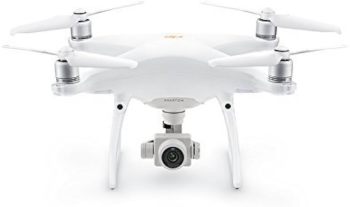- Excellent camera quality
- Advanced obstacle sensing
- Long flight time
- High precision mapping
- Excellent camera quality
- Long flight time
- High price point
- Requires registration in some regions
- Expensive
- Requires specialized knowledge
DJI Phantom 4 Pro V2.0 vs DJI Phantom 4 RTK
The world of drone technology has witnessed significant advancements in recent years, with DJI being a pioneer in the field. Two of their most notable products, the DJI Phantom 4 Pro V2.0 and the DJI Phantom 4 RTK, have garnered attention from professionals and enthusiasts alike. In this comparison, we'll delve into the features, capabilities, and differences between these two phantom drones.
Design and Build
Both the DJI Phantom 4 Pro V2.0 and the DJI Phantom 4 RTK share a similar design language, with a sturdy and compact body that exudes a sense of durability. The V2.0 model boasts a sleek and aerodynamic design, weighing in at approximately 1,375 grams. In contrast, the RTK model has a slightly more rugged build, tipping the scales at around 1,441 grams. While both drones are built to withstand harsh environments, the RTK's reinforced structure makes it more suitable for demanding applications.
Camera and Imaging
The DJI Phantom 4 Pro V2.0 is equipped with a 1-inch CMOS sensor, capable of capturing stunning 20-megapixel stills and 4K video at 60fps. The camera also features a mechanical shutter, which reduces rolling shutter distortion and ensures crisp images. On the other hand, the DJI Phantom 4 RTK boasts a similar 1-inch CMOS sensor, but with a few notable differences. The RTK model's camera is specifically designed for mapping and surveying applications, with a higher signal-to-noise ratio and improved low-light performance.
Flight Performance
Both phantom drones are powered by DJI's proprietary OcuSync transmission system, which provides a reliable and high-definition video feed. The V2.0 model has a maximum flight time of up to 30 minutes, while the RTK model can stay airborne for around 25 minutes. In terms of speed, the V2.0 reaches a top speed of approximately 45 mph (72 kph), whereas the RTK model has a slightly more conservative top speed of around 36 mph (58 kph).
RTK Technology
One of the most significant differences between these two phantom drones is the presence of Real-Time Kinematic (RTK) technology in the DJI Phantom 4 RTK. This advanced navigation system provides centimeter-level positioning accuracy, making it ideal for applications such as surveying, mapping, and construction. The RTK model can achieve this level of precision by combining GPS data with corrections from a base station or network, resulting in highly accurate and reliable positioning.
Additional Features
The DJI Phantom 4 Pro V2.0 comes with a range of intelligent features, including ActiveTrack, TapFly, and Draw mode. These features enable users to capture complex shots with ease, making it an excellent choice for cinematographers and content creators. In contrast, the DJI Phantom 4 RTK focuses more on industrial applications, with features like TimeSync, which ensures that all data is accurately synchronized with the drone's clock.
Conclusion
In conclusion, while both the DJI Phantom 4 Pro V2.0 and the DJI Phantom 4 RTK are exceptional phantom drones, they cater to different needs and applications. The V2.0 model excels in terms of camera performance, flight time, and intelligent features, making it a top choice for photographers, videographers, and enthusiasts. On the other hand, the RTK model's advanced navigation system and rugged design make it an ideal solution for industries that require high-precision mapping and surveying capabilities. Ultimately, the decision between these two phantom drones depends on your specific needs and requirements.































